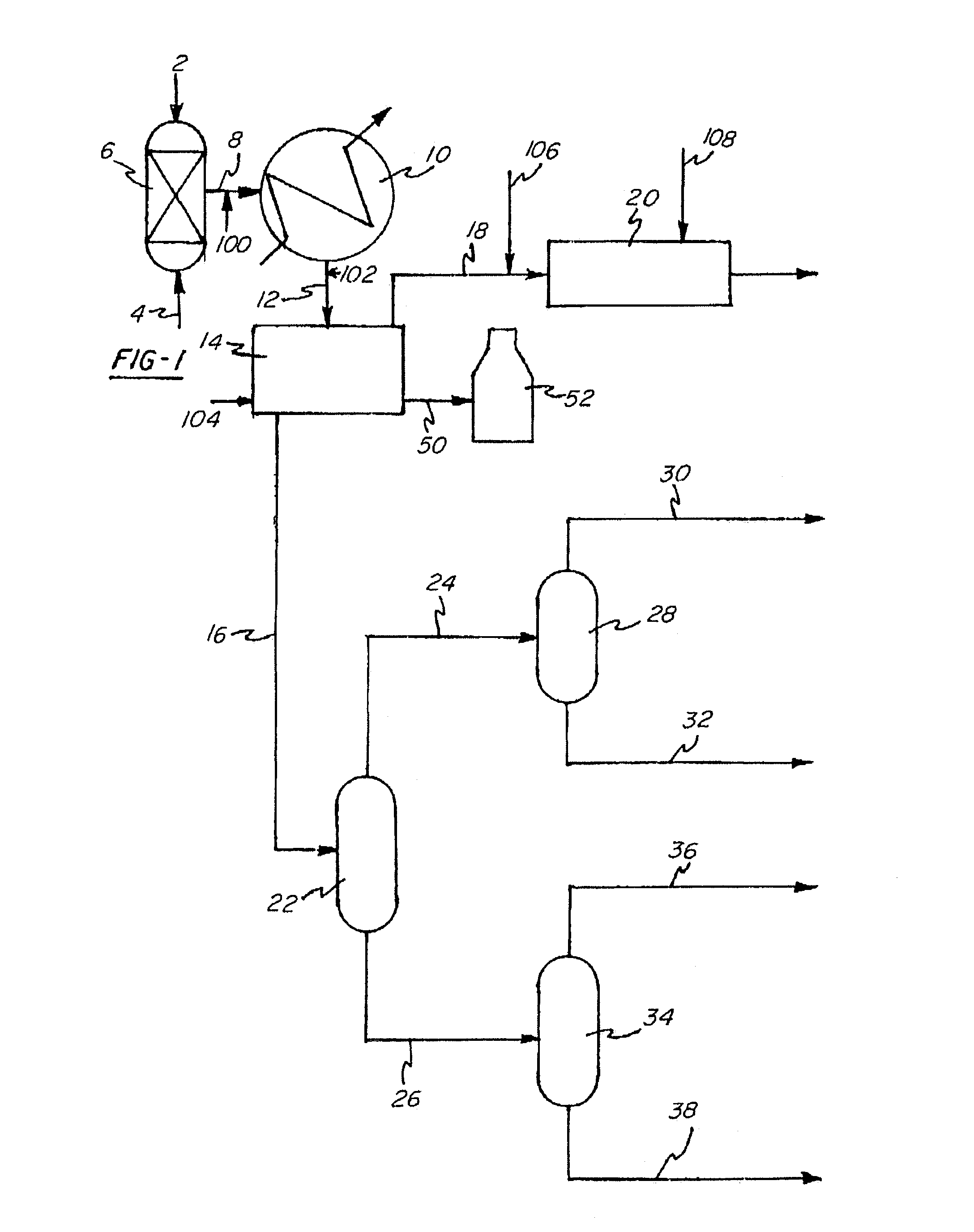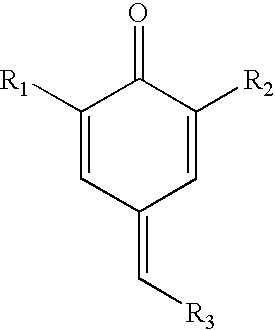Polymerization inhibitor for styrene dehydrogenation units
a technology of styrene dehydrogenation and polymerization treatment, which is applied in the direction of thermal non-catalytic cracking, separation processes, fuels, etc., can solve the problems of inability to effectively inhibit polymerization treatments that are effective when injected in the purification process, and inability to inhibit hydrocarbons
- Summary
- Abstract
- Description
- Claims
- Application Information
AI Technical Summary
Benefits of technology
Problems solved by technology
Method used
Image
Examples
examples
Introduction
[0019]During styrene production, the hot ethylbenzene dehydrogenation reactor effluent is cooled, condensed, and sent to a settling drum. Non-condensables are compressed in the vent gas compressor and sent to the boilers to be used as fuel. Condensables are settled in a settling drum allowing for the separation of water and hydrocarbons containing crude styrene. The separated crude styrene is then sent to distillation for purification or to storage. The dehydrogenation effluent and non-condensables in the vent gas compressor are composed of water and hydrocarbon vapors containing styrene. The high temperatures to which the reactive monomer styrene is exposed causes styrene to polymerize. A number of known styrene polymerization inhibitors that are very effective in the distillation sections have limited applicability in the dehydrogenation section due to excessive temperatures and the presence of water. Many polymerization inhibitors partition to the water phase, reducin...
PUM
| Property | Measurement | Unit |
|---|---|---|
| temperatures | aaaaa | aaaaa |
| temperatures | aaaaa | aaaaa |
| temperature | aaaaa | aaaaa |
Abstract
Description
Claims
Application Information
 Login to View More
Login to View More - R&D
- Intellectual Property
- Life Sciences
- Materials
- Tech Scout
- Unparalleled Data Quality
- Higher Quality Content
- 60% Fewer Hallucinations
Browse by: Latest US Patents, China's latest patents, Technical Efficacy Thesaurus, Application Domain, Technology Topic, Popular Technical Reports.
© 2025 PatSnap. All rights reserved.Legal|Privacy policy|Modern Slavery Act Transparency Statement|Sitemap|About US| Contact US: help@patsnap.com



